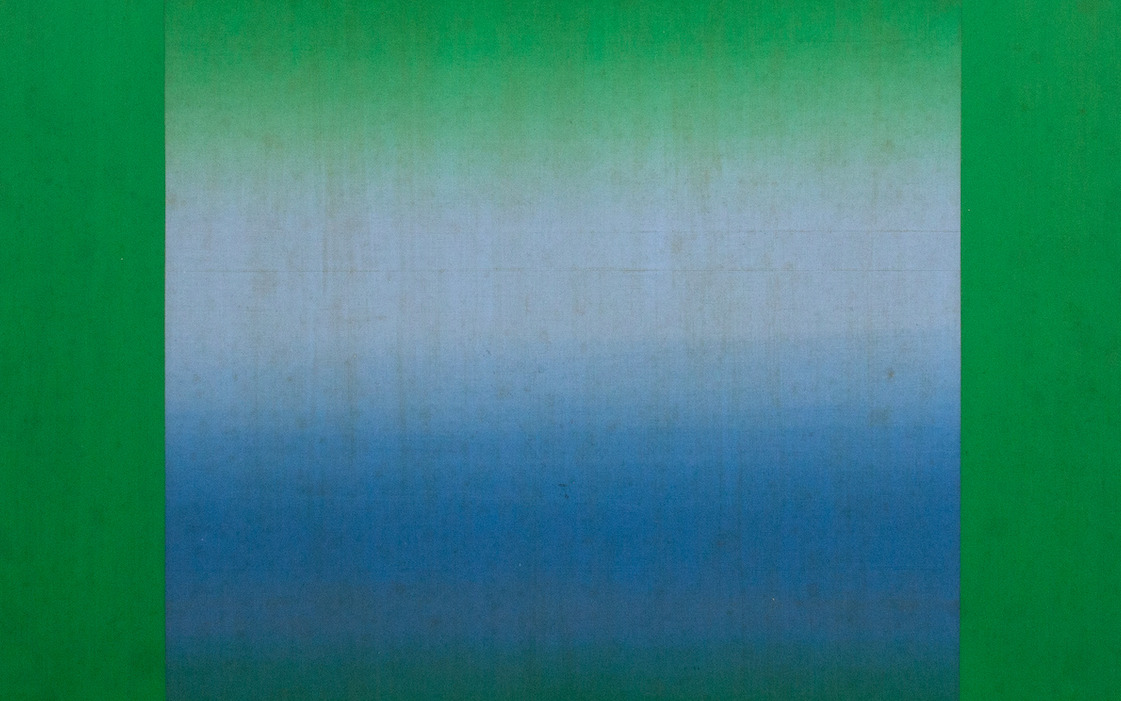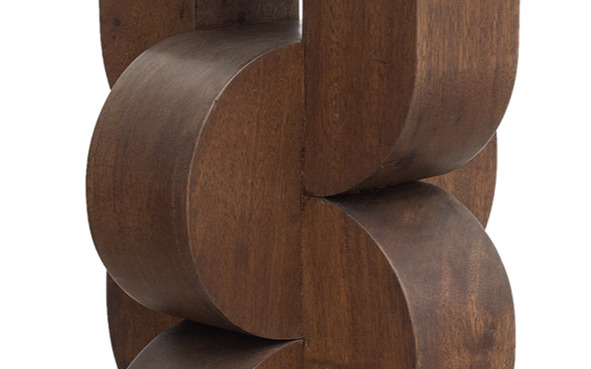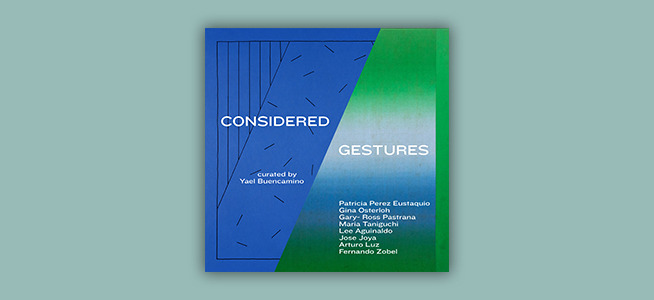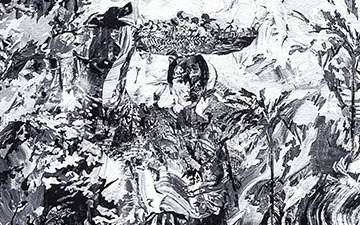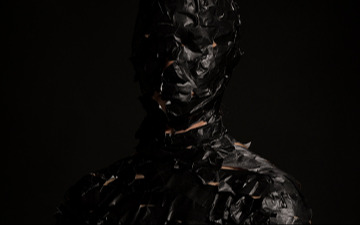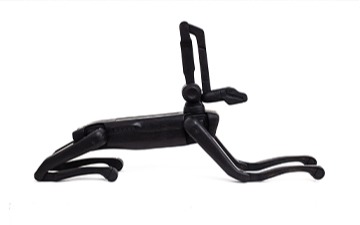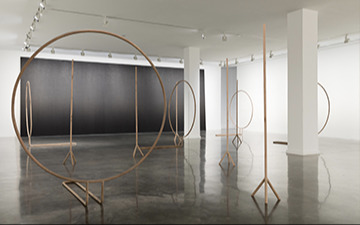
Installation Views
About
Amidst the inescapable visual stimuli of recognisable images compelling meaning making and suggesting messages to be decoded, a room populated by abstract works liberates the audience from such concerns. This presentation of non-figurative works within the antiseptic white walls of the gallery heightens this freedom from the context of everyday life, allowing the works to exist in a kind of void that invites the viewer to trust his intuition and allow his initial reaction to be formed by the work that confronts him, then linger to see what more they might reveal.
The artists represented here are from two generations separated by half a century but connected by their fluency in non-representational art and the nature of their practices – studied, methodical, deliberate. On these surfaces are ruminations, distillations of ideas, attempts to grapple with visual problems, and restorative meditations. Perceived spontaneity is imagined. The dispersal of pigment on Fernando Zobel’s canvas is meticulously planned, its execution mapped out in his notebooks. Gina Osterloh’s graphic photos likewise first find form in sketchbooks before the lines and dashes are drawn on photo backdrop paper.
Even when there are no preparatory studies but the intentionality is evident, refined by working in series, put aside and revisited over the years, subtle tonal modulations of Lee Aguinaldo’s Green Circulation which he described as zen exercises display calm controlled mastery of technique. It is a meditative space that is echoed in Maria Taniguchi’s Untitled. This small version of her normally monumental brick walls encourages intimate engagement that rewards with the revelation of imperfection. It with this same quieted mind that one approaches Arturo Luz’s Anito, a sculpture representative of the artist’s lifelong fascination with geometric forms and lines and his fastidious investigation of these in paint, wood, metal, stone and burlap.
The only work in this exhibition with a nod to improvisational gestures, Jose Joya’s Salute to the Blue Ants, with its splatters and thick applications of paint bear the hallmarks of abstract expressionism with which he is identified but the composition nonetheless points to restraint and forethought. Similar brush strokes and paint blobs appear in Patricia Perez Eustaquio’s Shamanisms – rendered in graphite – drained of colour and texture they are almost unrecognisable save for the visual resonance with Joya’s painting.
Eustaquio and Joya’s relationship with paint is indicative of a generational divergence in attitudes to materiality. While a shared interest in it connects all the artists in this exhibit, they approach medium from different perspectives. For the the 20th century abstractionists, freed from the academic imperative to depict figures, material became both medium and subject to be explored for their capability to conjure desired effects and manipulated to wrestle with visual conundrums in different dimensions. In the practice of the contemporary, there is a deeper engagement with their medium. They make purposeful choices of medium cognisant of their implications; they contemplate the significance of materials, their origins and explore transformation and translation. Borne out in the practice of Gina Osterloh, whose decision to present drawings through the medium of photography is explained by the artist “as a reminder of the formative constructs we are born into – language, gesture, posture, identity – the visible and invisible frameworks that continually shape us.”
Process and material are integral to the practice of contemporary artists especially those that are conceptually based but to depend completely on the ideas being investigated to apprehend the artworks here is akin to the propensity to judge the moderns by their place in history. Gary Ross Pastrana’s mechanical dog resembling the canine deity of the Egyptians sitting on its high pedestal is visually engaging and provides layered readings even absent the knowledge that it was sculpted by the craftsmen in the mountain province that carve Bulol statues.
Although the impetus for creation springs from different sources, what allows the artworks in this exhibition to inhabit the same space is a shared sensibility driving the creation of poetic objects. These are gestures – signifiers of something beyond but first encountered visually without words.
Words by Yael Buencamino
Yael Buencamino serves on boards of the Alliance of Greater Manila Area Museums and the Museum Foundation of the Philippines. She is currently a consultant with the Lopez Museum and Library. Prior to this she was with Ateneo de Manila University as Executive Director of Areté, the creativity and innovation hub of the University (2017 - 2019), Managing Curator of the Ateneo Art Gallery (2007 - 2017) and lecturer in the Department of Fine Arts.
Lee Aguinaldo (1933 - 2007) was born in New York to a Filipino father and Russian-American mother. He lived most of his life in the Philippines save for travels and a few of high school in the US. He was among the first generation of abstractionists in the Philippines and in 1953 was part of the landmark exhibition
First Non-Objective Group Exhibition in Tagala held in the Philippine Art Gallery (PAG). Aguinaldo won several prizes from the Art Association of the Philippines and in 1971 his works were selected to represent the Philippines in the Sāo Paulo Biennale. In 1992 he exhibited his Rembrandt Light Series at the Lopez Memorial Museum. In 2010, the Ateneo Art Gallery organized Lee Aguinaldo: In Retrospect bringing together representative works from the different artistic periods of his life, from his early abstract expressionist experiments to hard edged and color-field paintings, photographs, mixed media works and sketches. The following year, The Life and Art of Lee Aguinaldo was produced by Vibal Publishing in cooperation with Ateneo Art Gallery.
Patricia Perez Eustaquio (b. 1977) is known for works that span different mediums and disciplines — from paintings, drawings, and sculptures, to the fields of fashion, décor, and craft. She reconciles these intermediary forms through her constant exploration of notions that surround the integrity of appearances and the vanity of objects. Images of detritus, carcasses, and decay are embedded into the handiwork of design, craft, and fashion, while merging the disparate qualities of the maligned and marginalised with the celebrated and desired. From her ornately shaped canvases to sculptures shrouded by fabric, their arrival as fragments, shadows, or memories, according to Eustaquio, underline their aspirations, their vanity, this ‘desire to be desired.’ Her wrought objects — ranging from furniture, textile, brass, and glasswork in manufactured environments — likewise demonstrate these contrasting sensibilities and provide commentary on the mutability of perception, as well as on the constructs of desirability and how it influences life and culture.
A recipient of The Cultural Center of the Philippines’ Thirteen Artists Awards, Patricia Perez Eustaquio has also gained recognition through several residencies abroad, including Art Omi in New York and Stichting Id11 of the Netherlands. She has also been part of several notable exhibitions, such as The Vexed Contemporary in the Museum of Contemporary Art and Design, Manila; That Mountain is Coming at the Palais de Tokyo in Paris, France; and An Atlas of Mirrors in the 2016 Singapore Biennale.
Jose Joya (1931 -1995) studied fine arts at the University of the Philippines and trained under the leading Filipino artists of the day, Guillermo Tolentino and Fernando Amorsolo. He graduated with honors in 1953 and in the same year he participated in the Philippine Art Gallery’s First Non-Objective Group Exhibition in Tagala. Throughout the 50s he received grants to pursue further studies abroad, from 1954-55 in the Instituto Cultura Hispanica in Madrid then in the Cranbrook Academy for Art in Michigan from 1956-57. It was in those sojourns in Europe and America where he would be exposed to modern art and benefit from the mentorship of abstract artists. In 1964, his abstract expressionist paintings would, along with the sculpture of Napoleon Abueva be selected for the Philippine Pavilion in the Venice Biennale; the Philippines’ only participation in this international exhibition until 2015. From 1970-76, Joya served as Dean of the UP College of Fine Arts. In 2003 he was posthumously given the National Artist Award.
Arturo Luz (b. 1926) studied in the University of Santo Tomas School of Fine Arts and continued his art education in the United States – at the California College of Arts and Craft in Oakland and the Brooklyn Museum of Art School – and France at the Academie de la Grand Chaumiere. In the 1950s, Luz was among the artists that would gather and exhibit at the Philippine Art Gallery (PAG). He won the Art Association of the Philippines awards multiple times. In 1960 Luz established the Luz Gallery, launching the careers of many Filipino artists and introducing other Asian artists to Filipino audiences until it closed its doors in 2003. He has had several museum exhibitions attempting to survey his body of work, among them the Arturo Luz Retrospective at the Metropolitan Museum of Manila in 1995, Arturo Luz Sculptures in 2004, and #Luz@90 in 2016 both at the Ateneo Art Gallery and Arturo Luz First Light at the Ayala Museum in 2017.
Luz influenced Philippine art and design for decades as artist, gallery owner and museum director. He was founding director of the Design Center of the Philippines, the Museum of Philippine Art and the Metropolitan Museum of Manila. In 1997 he was given the National Artist Award.
Gina Osterloh’s (b.1973) photography, film, and performance based art work depicts markmaking and her own body traversing, tracing, and puncturing photographic space in a quest to interrogate the boundaries of a body and expand notions of identity. Osterloh’s printed photographs depict large scale photo tableaux environments as well as drawing on photo backdrop paper, that expand our understanding of portraiture and what photography can be. Symbolic themes and formal elements such as the void, orifice, and the grid, in addition to a heightened awareness of color and repetitive pattern appear throughout Osterloh’s oeuvre. Osterloh cites her experience of growing up mixed-race in Ohio as a set of formative experiences that led her to photography and larger questions of how a viewer perceives difference.
Solo exhibitions include PRESSURE/PLEASURE at Coco Hunday; ZONES at Silverlens; Gina Osterloh at Higher Pictures; Slice, Strike, Make an X, Prick! at François Ghebaly Gallery; Nothing to See Here There Never Was at Silverlens; Group Dynamic at Los Angeles Contemporary Exhibitions (LACE), and Anonymous Front at Yerba Buena Center for the Arts. Group exhibitions include Anticipating the Day at Silverlens; Not Visual Noise at the Ateneo Art Gallery; Multiply, Identify, Her at the International Center of Photography in New York City, Ours is a City of Writers at the Barnsdall Los Angeles Municipal Art Gallery; Energy Charge: Connecting to Ana Mendieta at ASU Museum, Demolition Women curated by Commonwealth & Council at Chapman University and Fragments of the Unknowable Whole Urban Arts Space OSU. Her work has been reviewed in The New Yorker, Art in America, The Brooklyn Rail, Contemporary Art Daily, Hyphen Magazine, Art Asia Pacific, Asian Art News, Art Papers, Artforum Critics Pick, Art Practical, and KCET Artbound Los Angeles. Awards include a Fulbright in the Philippines, a Woodstock Center of Photography residency, and a Create Cultivate Grant with the LA County Arts Commission and LACE. Gina Osterloh is an Assistant Professor in the Department of Art at The Ohio State University.
Gary-Ross Pastrana’s (b. 1977) art has been one of the most persistent in terms of combining concepts with objects. His conceptual pieces, although loaded with poetic intensity, remain unobtrusively subtle and even almost quaint in their appearance. Coiled photographs, woven tales from found pictures in the internet, sawed off parts of a boat shipped to another country, his shirt tied into a pole to commensurate a flag, these are the slightest of turns Pastrana has his objects make to create a new text within.
Pastrana received his Bachelor’s degree in Painting from the University of the Philippines, where he was awarded the Dominador Castañeda Award for Best Thesis. He has gained considerable experience and exposure within the region, with residencies in Bandung, Kyoto, Bangkok and Singapore. In 2006, Pastrana received the Cultural Center of the Philippines’ Thirteen Artists Award. Since then, he has shown at the Singapore Art Museum, Metropolitan Museum of the Philippines, the Jorge B. Vargas Museum and was part of the 2019 The Art Encounters Biennial in Romania, 2019 Singapore Biennale, 2012 New Museum Triennale in New York, 2010 Aichi Triennale, and 2008 Busan Biennale. In 2004, he co-founded Future Prospects art space. In addition to his artistic career, Pastrana curates and organizes exhibitions in Manila and abroad.
Exhibitions include Every Step in the Right Direction, Singapore Biennale, Singapore (2019); Art Encounters Biennial, Romania (2019); An Opera for Animals, Para Site, Hong Kong (2019), Rockbund Art Museum, Shanghai (2019); Utopia Hasn’t Failed Me Yet, Silverlens, Manila (2018, solo); The Extra, Extra Ordinary, Museum of Contemporary Art and Design, Manila (2018); The Other Face of the Moon, Asia Culture Center, Gwangju (2017); _*Clock, Map, Knife, Mirror*_, ROH Projects, Jakarta, (2016, solo); Summa, Jorge B. Vargas Museum, Manila (2014, solo).
Maria Taniguchi’s (b.1981) works encompass painting, sculpture, video and installation. Her practices investigate space and time along with social and historical contexts. Her series of “Untitled” brick paintings is an ongoing series that had been initiated in 2008. Each painting consists of seemingly countless rectangular cells, each one outlined by hand with graphite and filled with gray and black tones. The painstaking process creates a subtle yet complex pattern on the surface. These paintings develop in various extents, most of them reaching meters in size. The constructive structure embodies architectural elements, resulting in the paintings themselves manifesting as monumental existences within the space. The artist has referred to her brick paintings as the fundamental root of her larger artistic practice, while the other artworks such as sculptures and installations are reflection, or refractions of it.
Taniguchi won the Hugo Boss Asia Art Award in 2015 and was a LUX Associate Artist in 2009. Exhibitions include Who Writes?, Glaeria OMR, Mexico City (2019); La Ultima de las Tribus (The Last of the Tribes), Museo de Arte de Zapopan, Guadalajara (2019); the 12th Gwangju Biennale: Imagined Borders, Gwangju Biennale Exhibition Centre, South Korea (2018); 21st Biennale of Sydney, SUPERPOSITION: Equilibrium & Engagement, Museum of Contemporary Art, Australia (2018); History of a vanishing present: A prologue, the Mistake Room, Los Angeles (2016); Afterwork, Para Site, Hong Kong (2016); Globale: New sensorium, ZKM Centre for Art and Media, Karlsruhe, Germany (2016); The Vexed Contemporary, Museum of Contemporary Art and Design, Manila (2015); and the 8th Asia Pacific Triennial of Contemporary Art, QAGOMA,Brisbane (2015). Her work is held in a number of collections including the M+ Museum, Hong Kong; the Burger Collection, Hong Kong; Kadist Art Foundation, San Francisco; QAGOMA, Brisbane; and the K11 Art Foundation, Shanghai.
Fernando Zobel (1924-1984) was born in Manila to Spanish parents. He studied Philosophy and Literature in Harvard University. It was during his college years that he started to pursue painting and printmaking. After college and a brief stint in the Houghton Library of Harvard as researcher and assistant curator in the graphic arts department, he returned to the Philippines to work in the family business. He spent most of the 1950s in Manila where he exhibited with the Art Association of the Philippines and the Philippine Art Gallery (PAG), then the hub of Philippine modern art. In the late 1960’s after Zobel moved permanently to Spain to become a full time artist, he was included in significant international exhibitions of Spanish art: The Guggenheim Museum’s Before Picasso, After Miro (1960) Tate Gallery’s Modern Spanish Painting (1962) and the Spanish Pavilion of the 31st Venice Biennale (1962). In 2003, almost 20 years after his death, the Museo Nacional Centro de Arte Reina Sofia organized a retrospective of Zobel’s works that was shown in Madrid, Cuenca and Sevilla.
Zobel’s contribution to the arts went beyond his practice as an artist. While in the Philippines he wrote about the country’s art and culture and taught art appreciation in the Ateneo de Manila University. In 1959 before moving permanently to Spain, he donated his collection of Philippine modern art and a selection of prints by American and European artists to the Ateneo de Manila University which would lead to the establishment of the Ateneo Art Gallery in 1960, now widely recognized as the first museum of modern art in the Philippines. In Spain, he collected the work of Spanish abstract painters and established the Museo de Arte Abstracto Español in Cuenca. Before his death in 1980 he donated the museum as well his personal library to the Fundacion Juan March.
Works
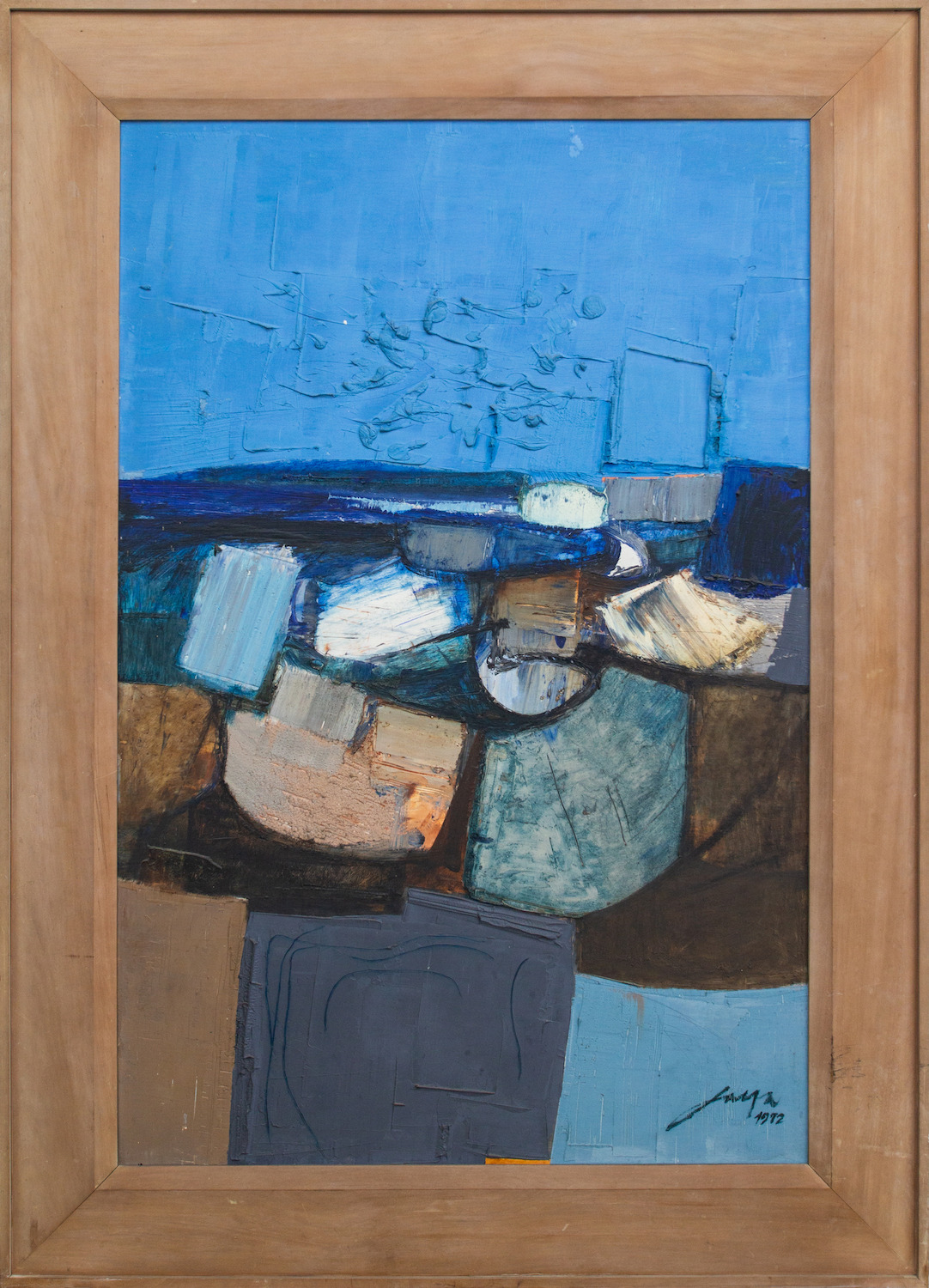
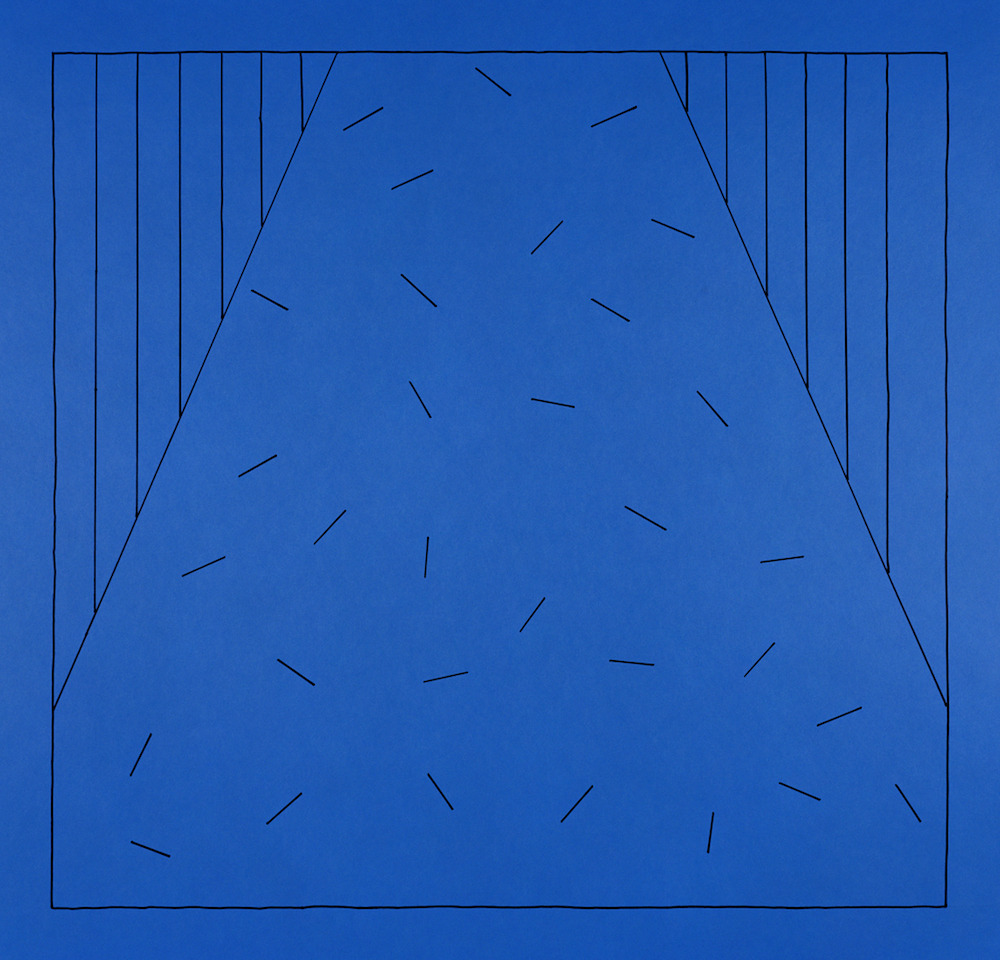
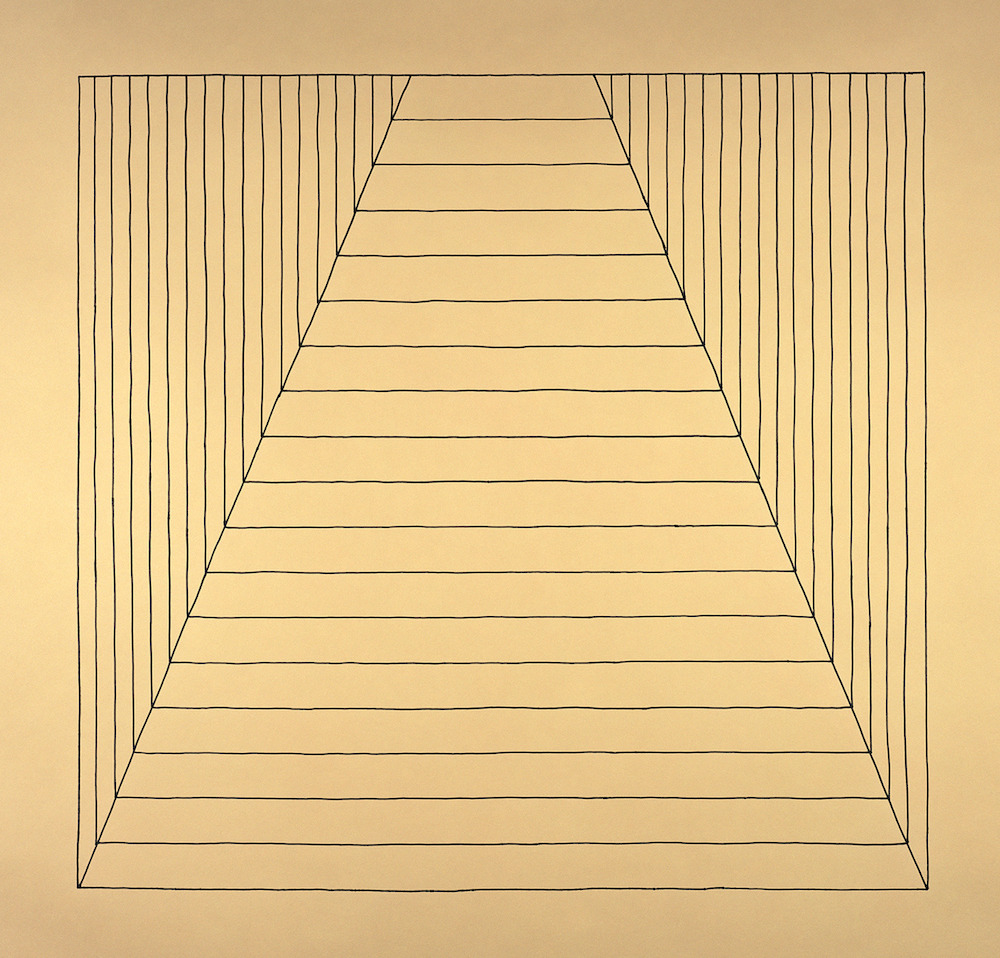
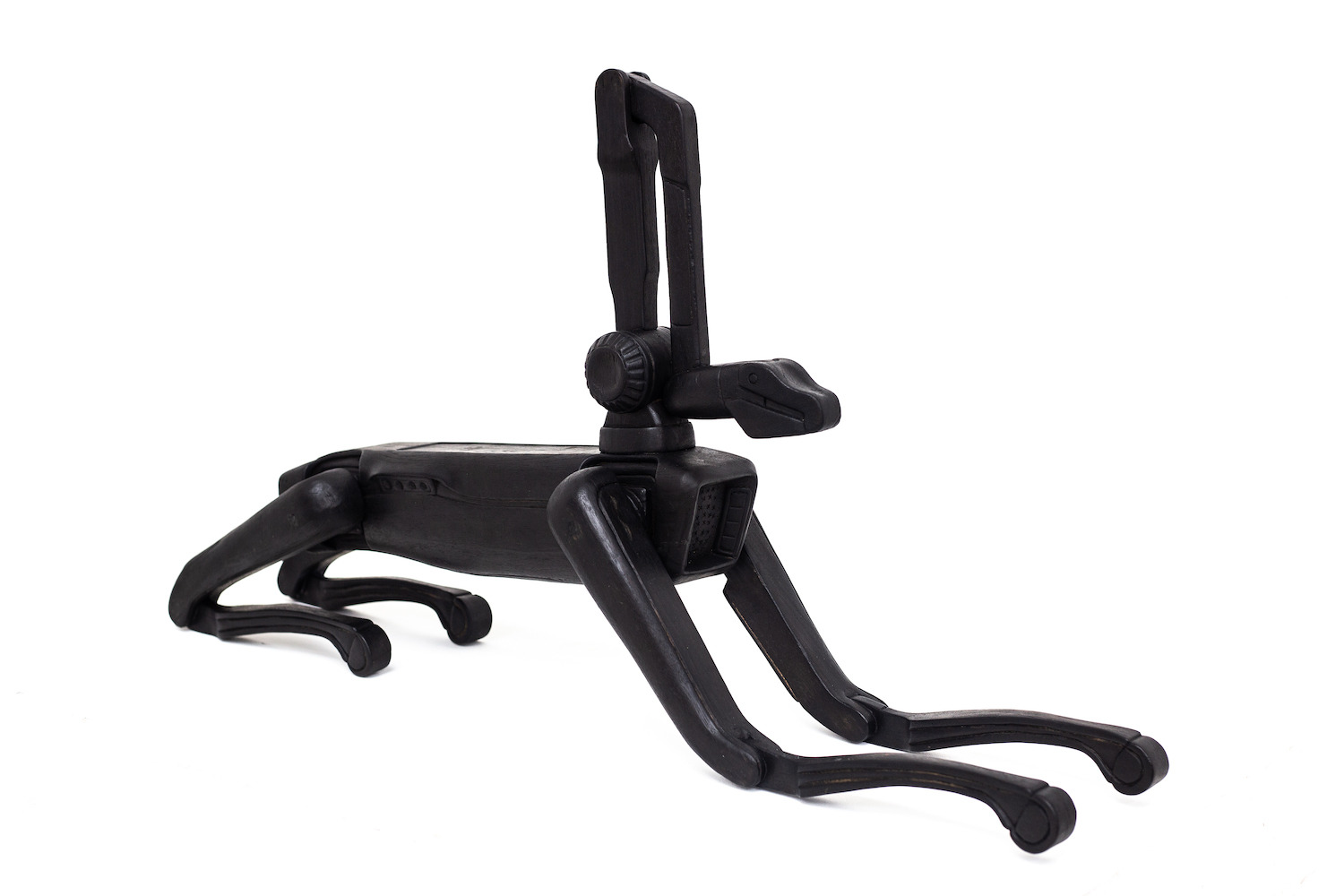
Lot- 01 Provisional Objects Series
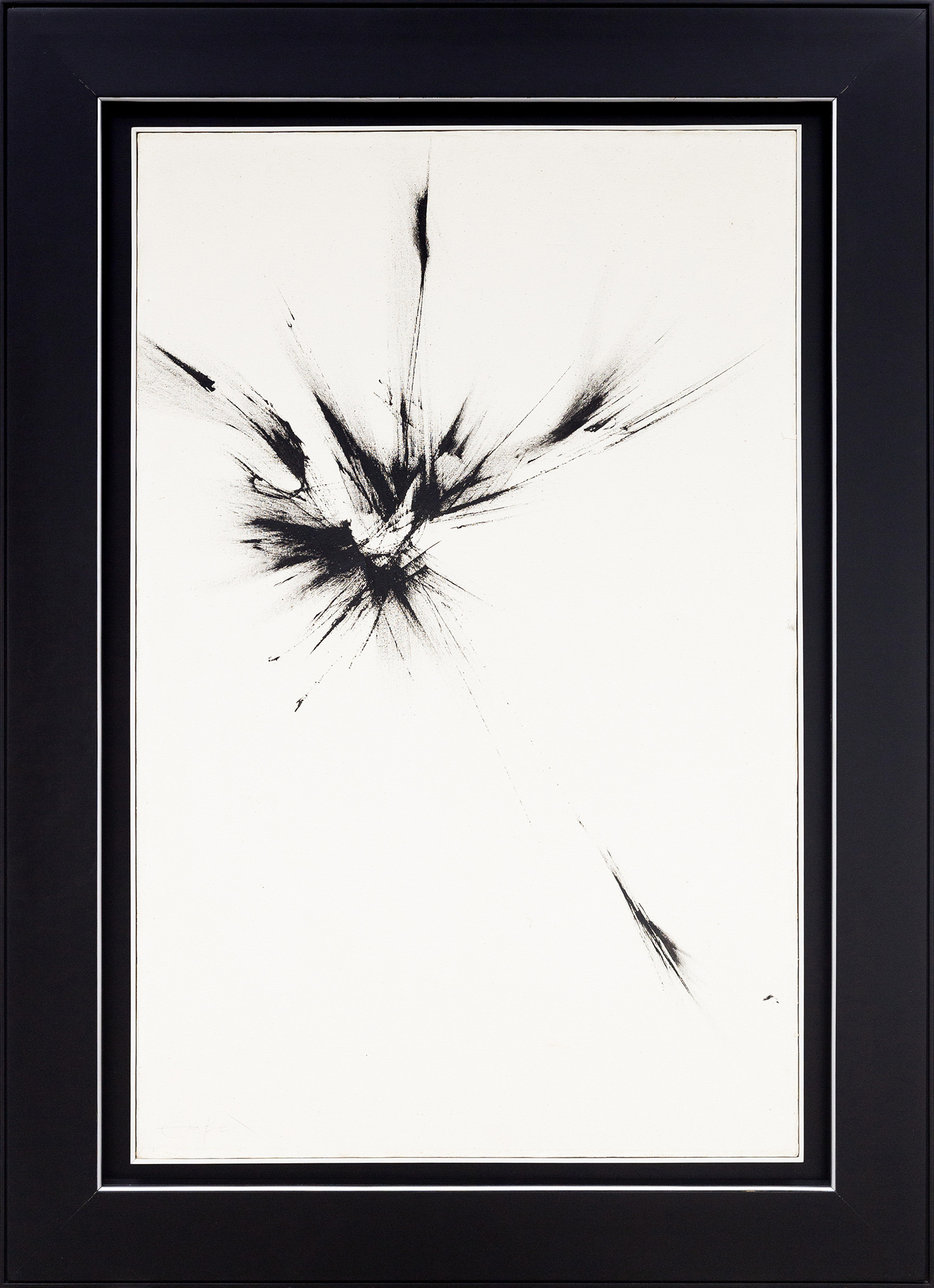
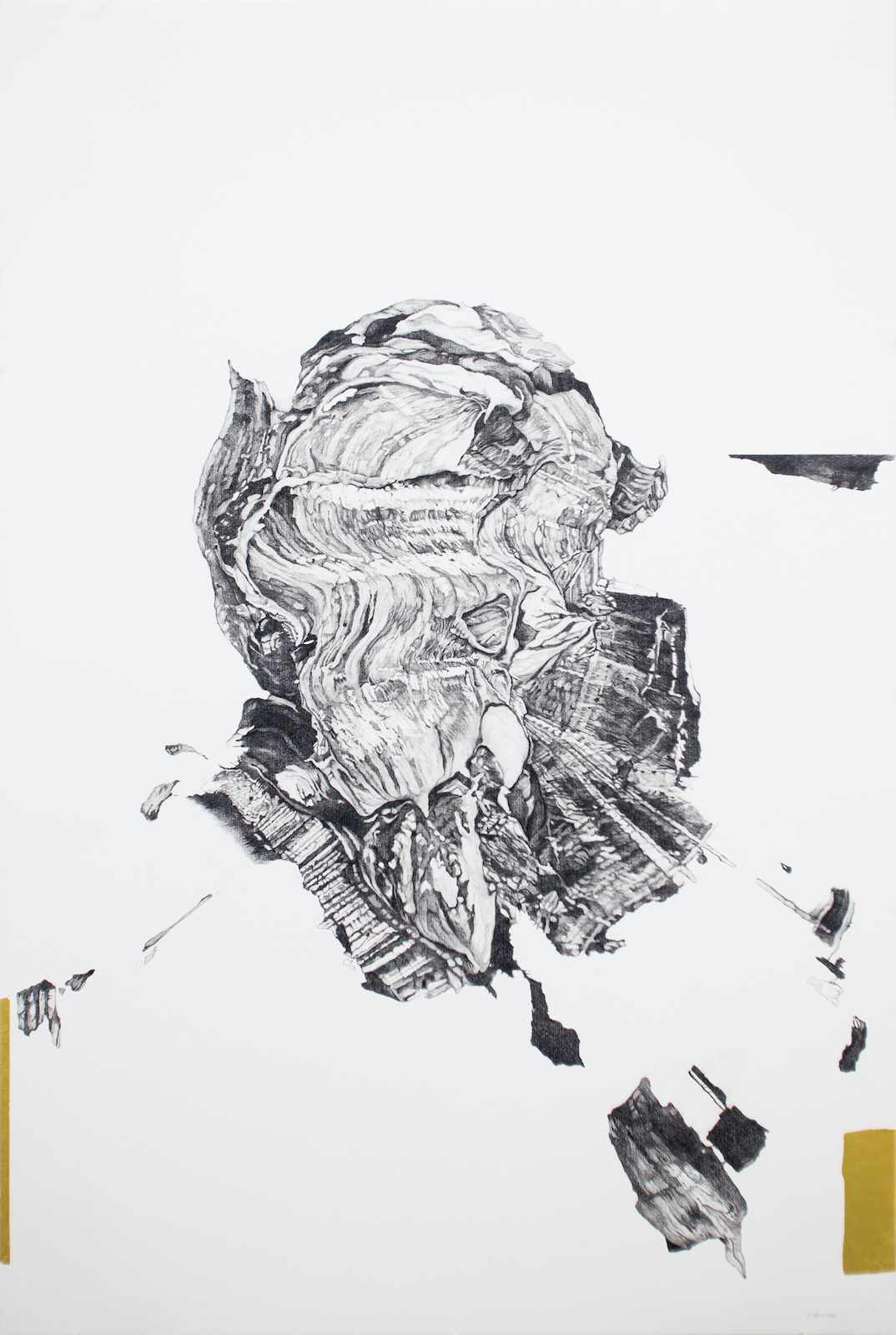
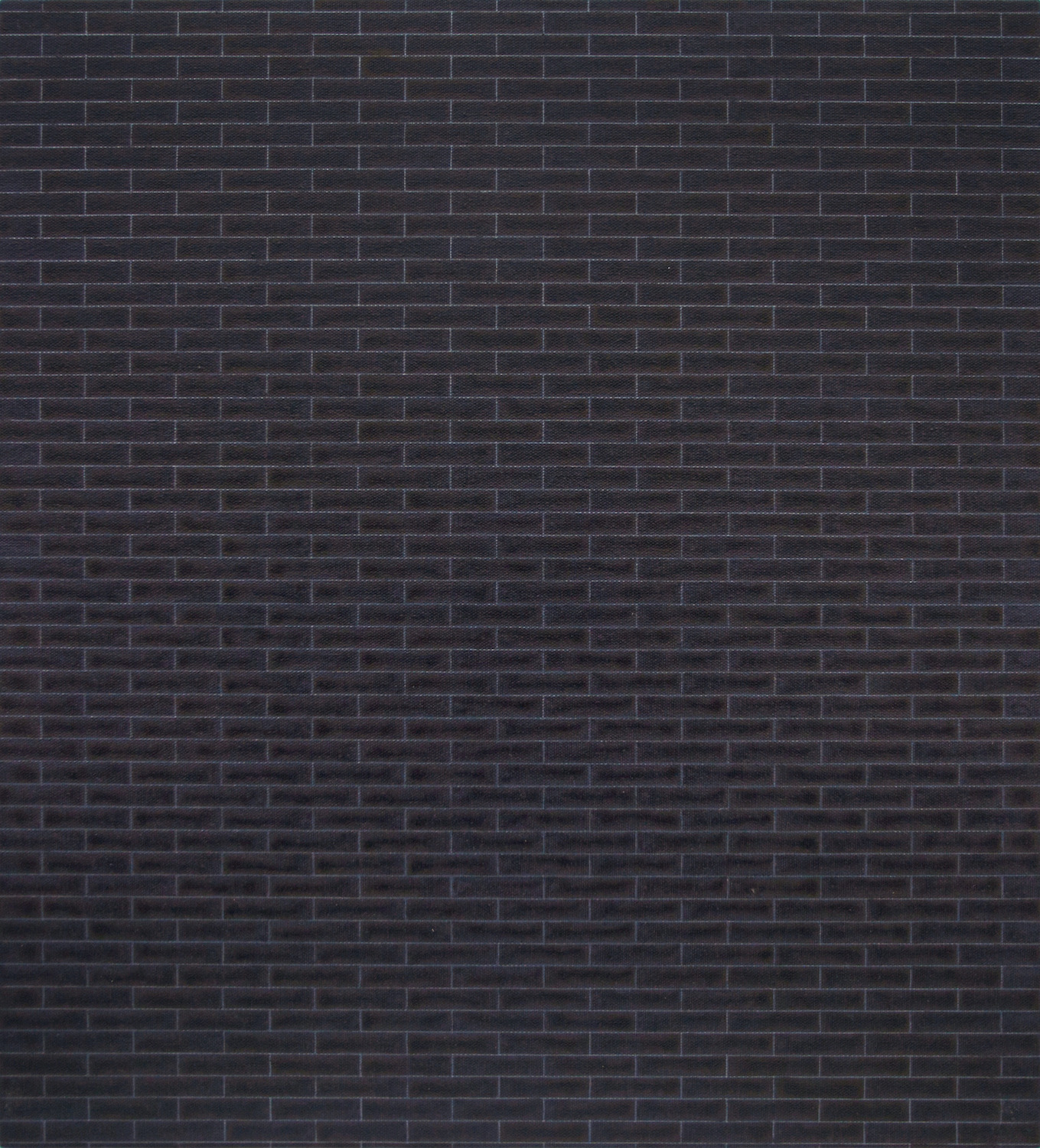
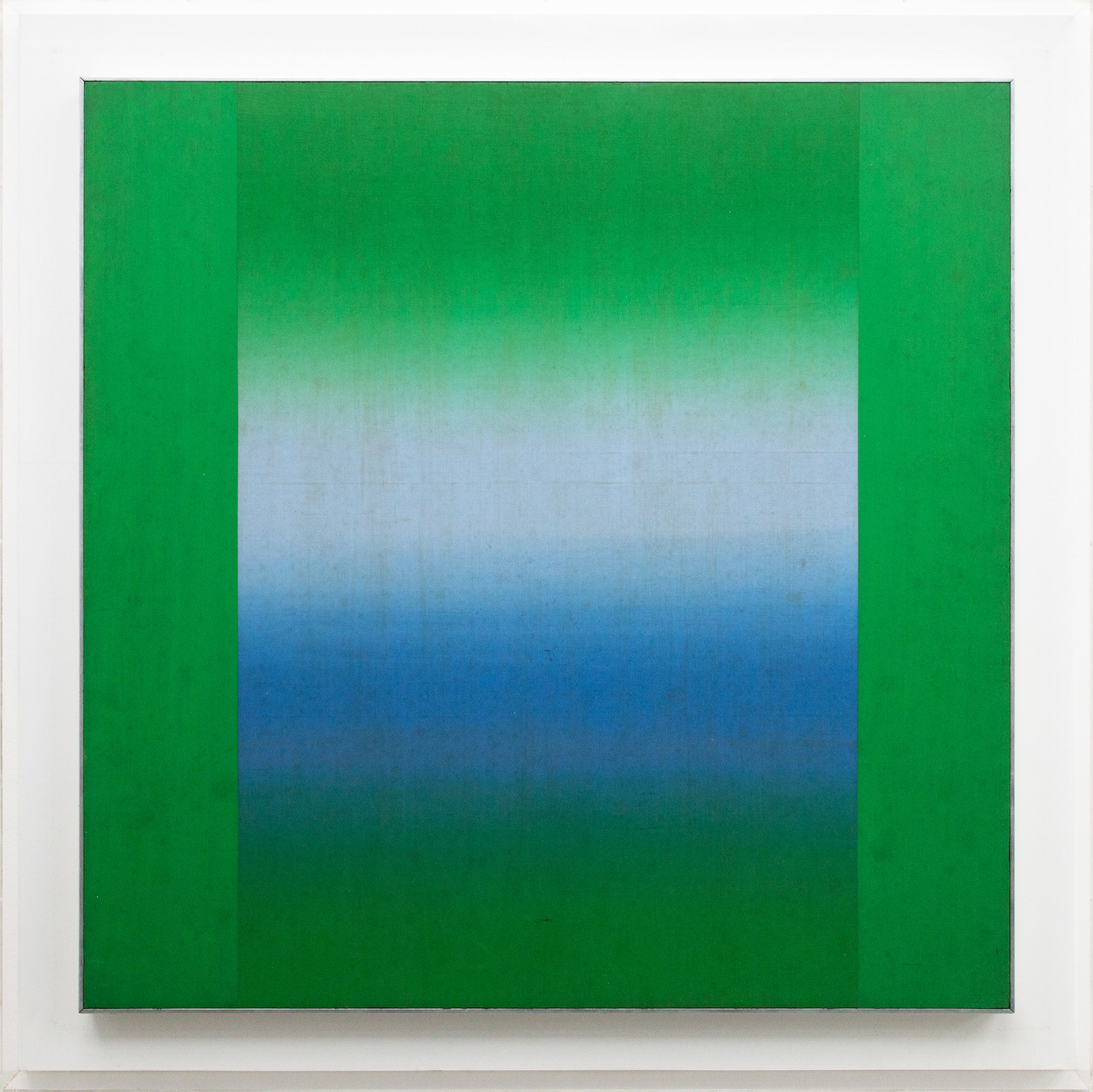
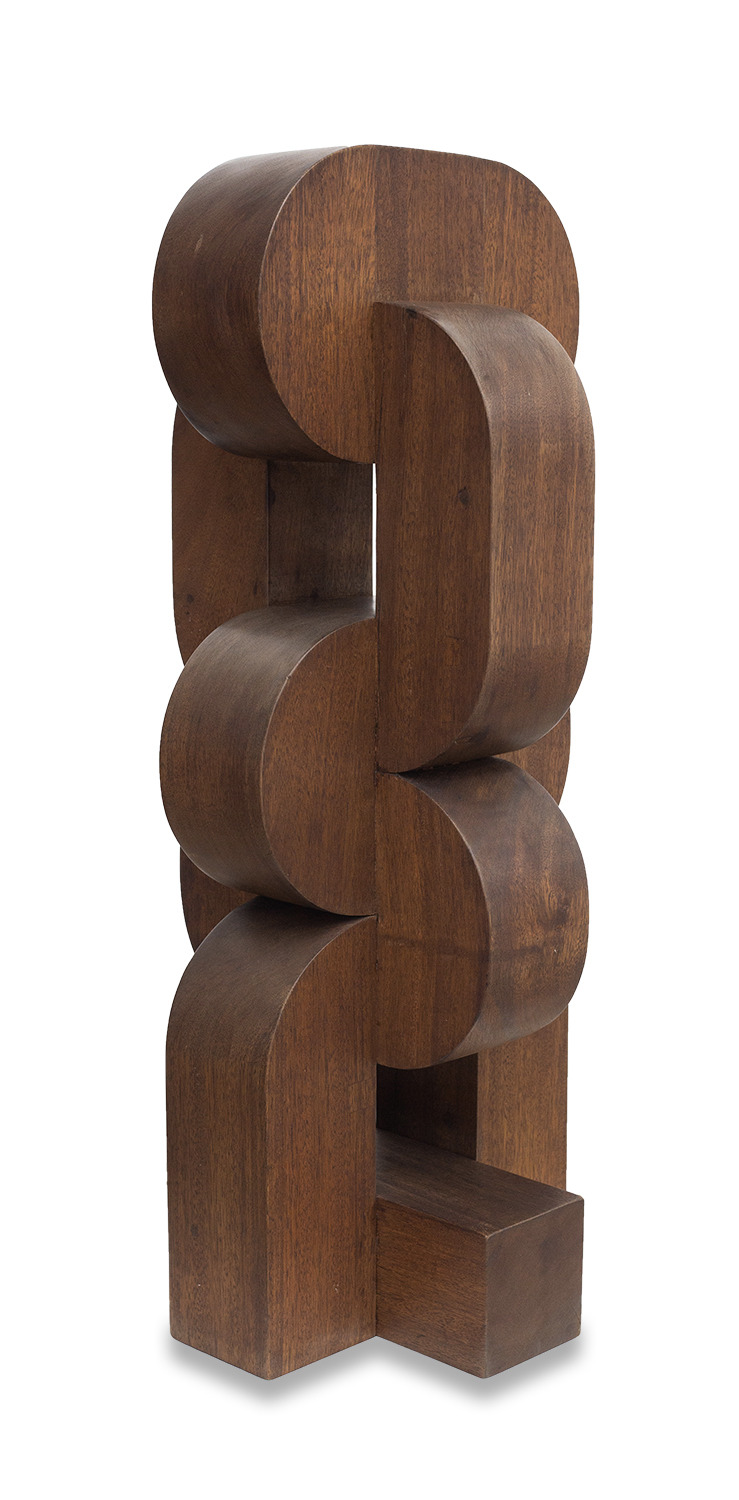
Video
Artists
